In college, I worked at a barn and my boss kept a special reenactment pony. The horse was prized above all others and regularly traveled the Southeast to reenact Civil War battles. My boss was very proud of this practice and boasted that he and his horse had worked together on the set of Mel Gibson’s Patriot (this was his mark of success). He also complained that standard tents of 1860 were not big enough to accommodate his 2002 stature, though here, too, there was a blushing kind of pride: he considered himself greater, at least physically, then the forefathers he so admired. Perhaps because he struck me as such a comical authority, I did not think very deeply about his reenactment practice. Like many things, it seemed such an obscure fascination as to be easily dismissed. I also took the lens of history for granted.
I’ve since discovered the beauty of an unsteady past; I’ve grown suspicious of historical interpretations that seem too sure of themselves. Talking to Irina Botea, I gathered more perspective. Via reenactment, Irina Botea delivers the past into the present. As one intent on facilitating freedom, Botea examines the preciousness of documentation while delving into personal, political histories. Her work examines the potential possibilities of choice embedded in every outcome — while also exciting, it involves sometimes difficult, empathic responses. She is a photographer, a performer, a filmmaker, and a teacher. These various facets of her creative work weave in and out of one another.
Irina Botea: The Courage Of The People is a really amazing example of reenactment. Jorge Sanjinés went to a village where police murdered miners from a tin mine when they tried to unionize; the miners wanted to join Ché. Sanjinés came back three of four years later to reenact the event with the survivors. It’s striking because at the beginning they make a statement, “We have reenacted this because we want to make sure that the history is told the way we want it to be told.” I mean, it’s a very conscious decision to mediate their history. This is important in reenactment, this attempt at personal mediation. When you know the ending, you’re really focused on how something happened and what possibilities were not taken advantage of. I think that’s very important for the present.
Caroline Picard: Do you feel like there are opportunities to take new steps [within a reenactment]?
IB: Absolutely. And they really happen during reenactments. It’s not just a repetition of the past—because you can never really repeat it—it’s a remediation of the past for the present.
CP: That reminds me of the reenactment you did about the Romanian Revolution…
IB: Auditions for a Revolution: I asked friends and students and faculty members to audition for roles in the 1989 Romanian Revolution. I juxtaposed new footage with footage from Andrei Ujica’s and Harun Farocki’s Videograms of a Revolution—a film they made collecting footage from the Romanian TV or from private sources. They edited it together and added commentary on top of it. Their comment about how media affects an event is very important.
This was actually central to the Romanian Revolution: it was the first televised revolution. In that revolution, you were like an actor; you were in between reality TV and the reality of your own life.
I remember there was this crazy moment when a Romanian politician said, “Well, everybody’s watching us. We have to prove to the Western world that we are good revolutionaries.” But what does that actually mean, we’re good revolutionaries? You know some people are shooting; we don’t know who’s shooting; we don’t even have guns most of us, and we just have to come to the television to defend the television, so what does that mean, ‘you are a good revolutionary?’ That you are a good sheep, or a good wolf, or bird?
This is something that’s really interesting because [reenactment] is about sharing. The piece is also about sharing and questioning the possibility of rioting. And how do we create protests today? How do they become efficient? What is the life of a protest? What if you’re not part of that history, does that mean you’re not allowed to try to understand it? Do you just remain separate in terms of nations, “Oh, I can only make a work about this because I’m only part of this culture”—you know? This separation of individuals according to different, conventional groups actually comes up as one of the questions.
How do you transmit an event with a medium? Or how you create this mediation? [In AFR] I wanted to try different variations. I tried one sequence with video and one with16mm. Film generally creates a different type of document than digital media. There is an authority that film has over video which I wanted. Also the camera we brought from Romania belonged to this documentary firm, Sahia Film, who was one of the institutions that filmed the [original] revolution. I don’t know if my camera was necessarily one of them, but the idea of using a camera that had been a witness like I was a witness felt reassuring. It was a friendly camera for me. And there is this beauty of the heavy body of the camera. And the cost of the filmstrip—it creates such a tension, versus video which is accessible.
Which is, of course, something to be discussed because you see a lot of artists now that go to 16mm film or actually to 35mm film and you see now, in exhibitions, the authority of 35mm films: it’s incredible. In order for an artist to be taken seriously, he has to shoot on 35. Honest HD is not enough. You need a Red Camera, so it’s a Red Camera, and 35—I mean there’s also this kind of an aspect.
But I was given that film as a gift. So at that time I didn’t think about the cost of film, I just wanted film.
CP: It reminds me of you talking about how digital video has a real connection to revolution and artistic production, and you know, a counter-cultural voice—I mean I think that’s one of the things that’s really interesting about you using different mediums for AFR, because you’re juxtaposing this nostalgic relationship to history and its reenactment in the film, but then you’re also incorporating digital media which shows how asking people in Chicago of different ages and nationalities to recreate this historical act is a construct. And then to have that also layered with the original footage—it feels like a representation of how we relate to history—you point to an unstable relationship to the past.
IB: Wow. (laughs) I mean, I like your interpretation. I think it’s true? On the one hand, reenactment is a construct. It’s always an event. It’s always a construct but there is also something truthful happening there. There is a reality in the construct of it that happened and they are layered on top of each other. Because those things actually happened. And we were there!
CP: Will you talk a little bit about the guide you had in Romania this summer?
IB: (laughs) For many years I wanted to go and film the mushroom and fruit pickers from the mountains. I also wanted to film the deserted Villages of Apuseni. It was a challenging process for me, because how do you go and somehow interact with the void? Those villages were absolutely voided. It was not about interacting with people but the void they left behind.
I was with Nicu Ilfoveanu and Toni Cartu—two of my very good friends. And I had so many doubts, like how are we going to go there with a big camera—us from the city—and take meaningful or not-so-meaningful images.
In the end, we interacted with a 75 year-old man, a tourist writer, who was our guide for the week. He writes for a tourist magazine called Picturesque Romania. And he has an interesting discourse from the 80s that proposes certain views on what is beautiful in the country. And this idea of the picturesque came to the forefront—what does it actually mean picturesque? And how does it connect with patriotism? And what does it actually mean for us to go into the country to look at the landscape or to look at old deserted houses and to think, “Oh, this is so beautiful; this is picturesque.” The word means that something is so beautiful it needs to be painted; we need to encompass it—to possess it in a specific way. But at the same time, if you don’t say this is picturesque are you not patriotic enough? Even though you are just consuming the landscape and you’re consuming what you see in front of you as entertainment…
CP: It sounded like something about the old man made it work…
IB: It was a wonderful encounter. First we were scared of him because he was a strict guy—then we found out he had three wives and we just started to laugh.
It was a meaningful experience, I think, for all four of us; through him as the mediator to this landscape which was foreign to us.
Like there is this very important historical figure for Transylvania—Avram Iancu. We passed by in the car and [our guide] was showed us where Iancu died. And [our guide] was like, “Yeah, he died on a bench.” And we were like, “What? He died on a bench? I mean you know this like gigantic monumental historical figure, he just died on a bench?” He fell asleep because he was drunk. He fell asleep and he died. In the morning they found him…I finally become friends with Avram Iancu because I find out he died on a bench.
It was emotional for [our guide]. He had friends living in those villages and he would tell us, ‘This is the house of my friend,’ and what happened to him, also how children left. So he was really absolutely sad about it, for obvious reasons.
CP: That’s like what you were saying about having to look into a void—I’m sure he’s aware of it all the time.
IB: He goes to pick up fruits sometimes because—did you know how a tree actually dies if people don’t pick up the fruits? Like a tree becomes wild. It’s not just the house that is dying, but also the tree dies in terms of like, the fruits are not tasty anymore—he goes there and picks the pears he really likes. And it was amazing to go and witness this house, the human presence without any people—you’d still find dishes and carpets on the wall and it felt like suddenly they just decided: Now it’s time to leave and we’re not really taking much with us.
CP: It seems like you’re interested in capturing marginalized voices—I was thinking of Felicia, for instance…
IB: I’m interested in going from micro to macro. You encounter a person and talk with him or her and that’s how the story goes. Instead of going from a macro meta-narrative and then creating something with that. This maybe comes from a past experience of mine—I used to work with this NGO. It was very small. We would just go with two mini-vans and paint orphanages and organize workshops. I find this kind of process—when you’re trying to do something small that reverberates—more effective.
With Felicia there was also another thing. I’m interested in how people actually put themselves in the place of others. How do they identify or not identify with them? We always subjectively identify with the people around us, but with Felicia it was a bit more complicated. She was a not so-much-seen-character in Paris: a Romanian immigrant that was sometimes a prostitute and sometimes a burglar and she did that because she had to survive. She was perhaps a little more complicated for people to identity with.
How do you go out and make work when you are not part of a group? Or when you are in the position of sometimes being a colonizer? Later, with Felicia, we did this reenactment where we asked four men to reenact Felicia, four Romanian immigrants in Chicago who were also trained actors. For them it was kind of like going back to theater, through this process of trying to connect with Felicia.
For me, it’s always the confrontation with how do you as a person, as a subject, deal with the idea of The Other. How do you make an object of The Other in the same way you make an object of yourself.
CP: That’s what’s interesting to me about using cameras: your medium is always about objectification…
IB: The camera is a strange tool. It’s not easy to explain. By now I identify with the camera quite a lot. When I was little, I had this desire for a camera. When my grandfather was very ill, I wanted to capture him before he died—at that time of course we didn’t have any cameras.
I want to capture people. I want them to have some afterlife. It’s about the afterlife of an event; I want it to be there, recorded on the camera. Why does it need to be on the camera? Is the camera just creating another mediation? What is the presence of the camera doing for the participants? I think that the presence of the camera really confronts you with yourself. There is something about having a document after you’ve done something that seems important…
CP: That reminds me of reality TV shows and how, as opposed to [La Rouche’s] Chronicles of Summer, there is something really—
IB: Aggressive?
CP: Yes. It doesn’t feel like TV gives people the space to be honest, whereas in Chronicles of Summer something feels liberated, especially when the actors watch their performance at the end.
IB: This subject has been discussed so much. The relationship you have with a camera. Now it’s kind of a must. If you are experiencing food, first you take a photograph and then you eat it. If you don’t have a photograph of the food, it’s like you haven’t eaten.
I remember seeing an incredible film, I can’t remember the artist’s name. He took footage of a religious group that believes if they get filmed you steal their souls. [In the film] you see these beautiful children really hiding from the film. And this is such a mysterious gesture for us today—who hides from the camera? You hide because you want to control your image. We reproduce images and they reproduce us. But these people don’t allow anybody to take any pictures, including themselves.

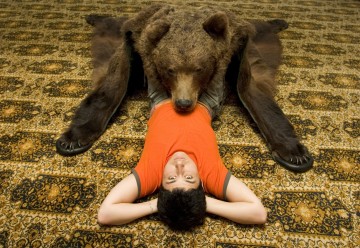
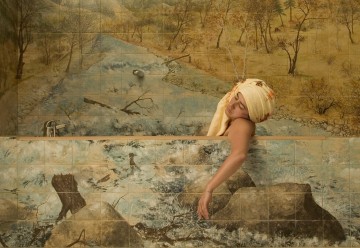
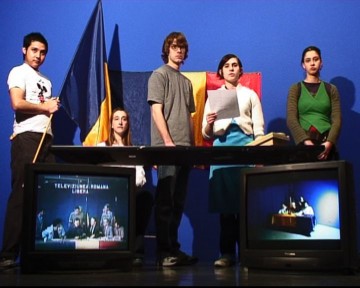
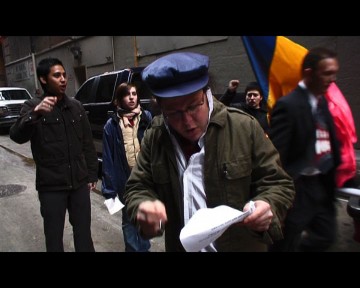
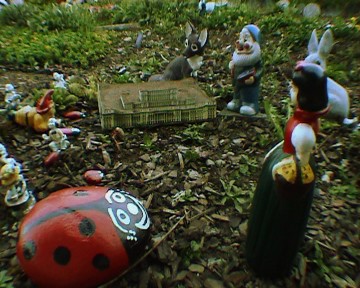
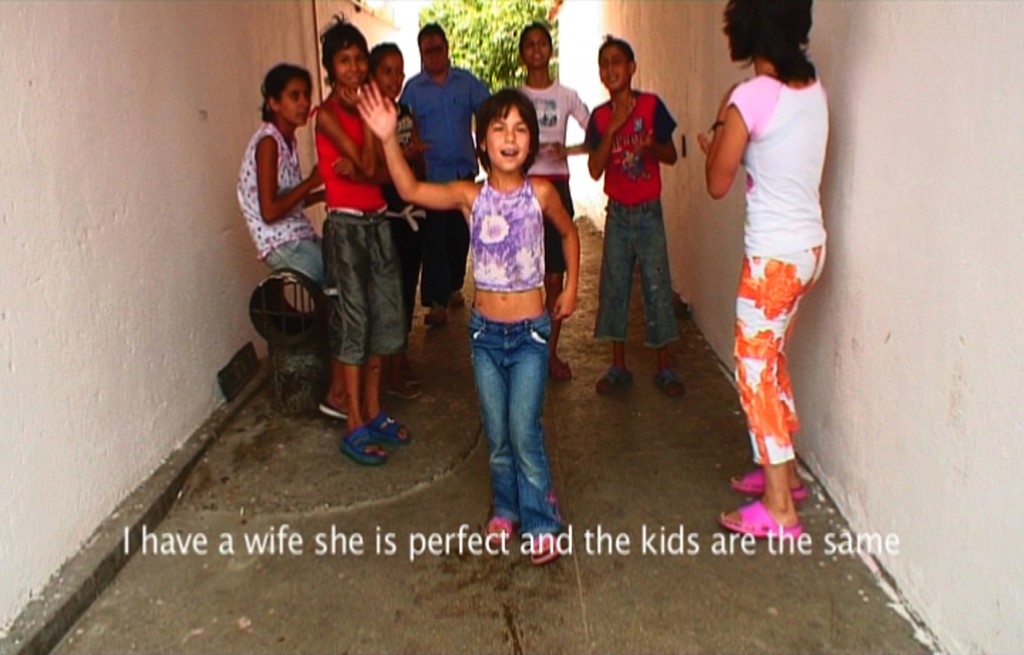
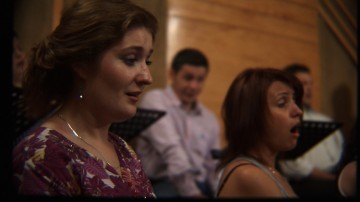
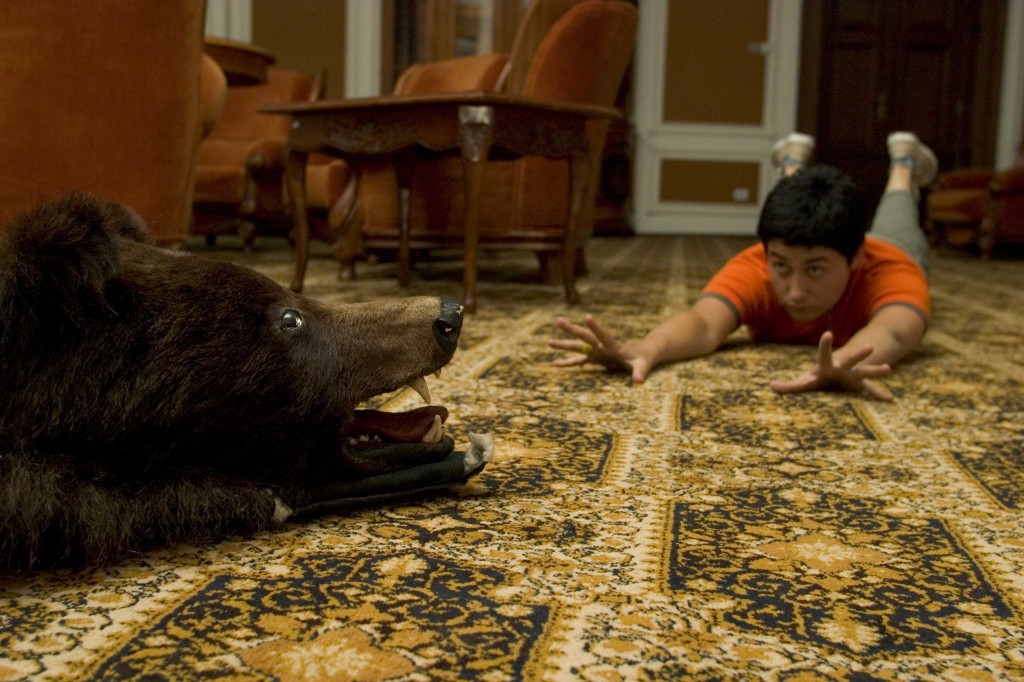



Pingback: Interview with Irina Botea | The Lantern Daily
Pingback: Reenacting a Many Possible Past: « sinziene
Pingback: Art and Transformation | The Lantern Daily
Pingback: Tonight! (A Reminder) | The Lantern Daily
Pingback: Monstrous Abandoned Places: Irina Botea’s Search for The Picturesque | The Lantern Daily